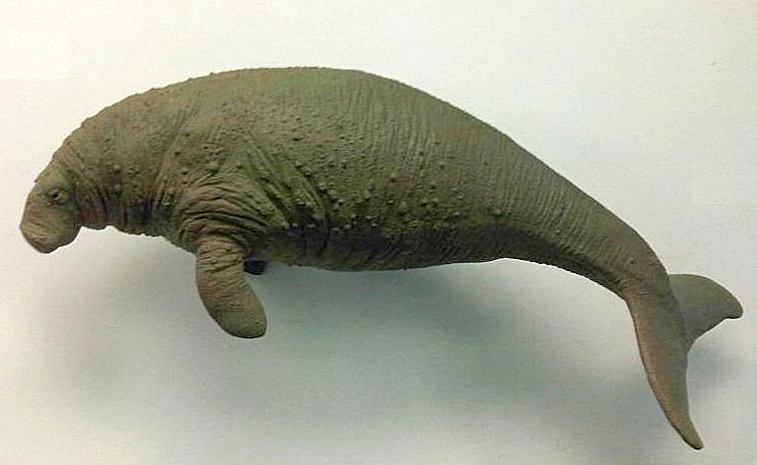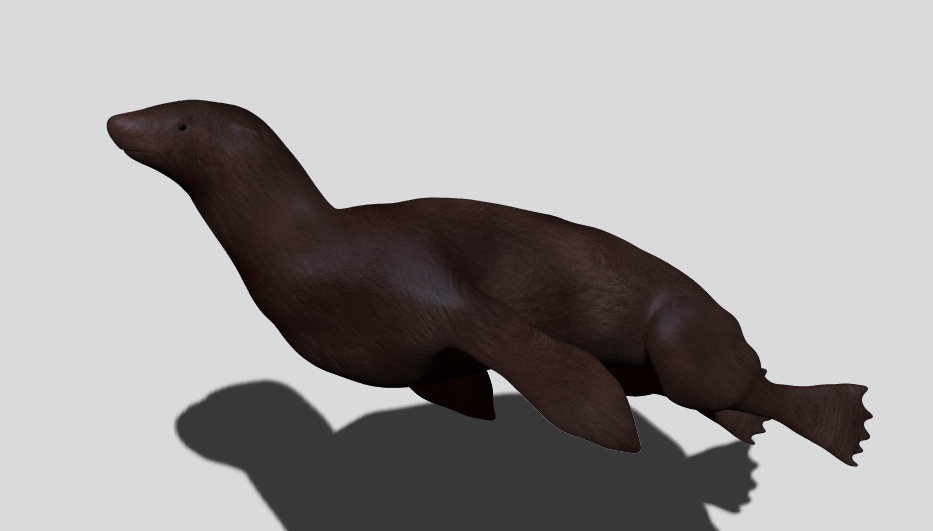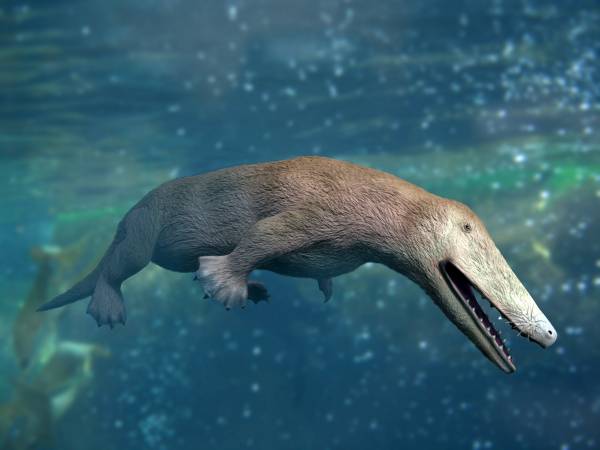The mysterious depths of Earth’s prehistoric oceans hold fascinating stories of evolutionary resilience and adaptation. When we examine the fossil record of ancient aquatic mammals, we discover not just extinct creatures, but profound lessons about how life responds to catastrophic changes. These marine pioneers—from early whales that walked on land to massive sea cows that once grazed coastal waters—reveal remarkable insights into evolutionary processes following mass extinction events. Their remains tell us how mammals repeatedly conquered aquatic environments, developing specialized adaptations while maintaining core mammalian traits. This article explores how prehistoric aquatic mammals serve as extraordinary case studies in evolution’s capacity to rebuild and diversify after major extinction events, offering valuable perspectives on life’s remarkable resilience.
The Return to Water: Mammalian Reverse Evolution

One of the most fascinating evolutionary stories involves mammals’ return to aquatic environments after their terrestrial ancestors had spent millions of years adapting to life on land. This remarkable “reverse evolution” occurred multiple times independently across different mammalian lineages following major extinction events. Early cetaceans like Pakicetus began their journey back to water approximately 50 million years ago, after the extinction event that eliminated non-avian dinosaurs created new ecological opportunities. These animals retained many terrestrial features while gradually developing aquatic adaptations, effectively documenting this transitional process through their fossil record. Their evolutionary journey represents not a simple reversal but a complex repurposing of existing mammalian traits for aquatic living—limbs became flippers, nostrils migrated to become blowholes, and body shapes streamlined while maintaining core mammalian characteristics like live birth and lactation. This pattern of reoccupying aquatic niches after extinctions demonstrates how life’s evolutionary trajectory isn’t simply linear but responds opportunistically to environmental changes.
Pakicetids: The First Steps Back Into Water

The Pakicetids represent one of the most illuminating chapters in mammalian aquatic evolution, providing crucial evidence of early cetacean adaptation following the dinosaur extinction. These wolf-sized mammals from approximately 50 million years ago possessed a fascinating mixture of terrestrial and aquatic adaptations that paleontologists have meticulously documented. Their skeletal structure retained typical terrestrial mammal characteristics, including four functional limbs capable of supporting body weight on land, while their skull morphology began showing specializations for aquatic feeding. Perhaps most tellingly, studies of their inner ear structure reveal early modifications that would eventually lead to the highly specialized hearing adaptations seen in modern whales and dolphins. Isotopic analysis of their fossilized teeth suggests they spent significant time in freshwater environments, likely hunting along riverbanks and in shallow waters. The Pakicetids effectively demonstrate how evolutionary adaptation doesn’t proceed in dramatic leaps but through incremental changes that accumulate over millions of years, ultimately allowing mammals to recolonize aquatic environments that had previously been dominated by reptilian marine predators.
Ambulocetus: The Walking Whale That Bridged Two Worlds

Ambulocetus natans, aptly nicknamed the “walking whale,” represents one of the most remarkable transitional fossils in the evolutionary record of aquatic mammals. Dating to approximately 48 million years ago during the early Eocene, this creature exhibited a truly intermediate form between land and sea mammals. Its fossilized remains, discovered in Pakistan in 1992, reveal a crocodile-sized animal with powerful legs still capable of supporting its weight on land, yet already showing adaptations for aquatic propulsion. The structure of its tail and hind limbs suggests it swam using a vertical undulation method similar to modern otters rather than the horizontal tail movements of modern cetaceans. Perhaps most significantly, its ear structures show adaptations for underwater hearing while retaining capabilities for detecting airborne sounds, literally embodying its transitional ecological position. Ambulocetus likely lived an amphibious lifestyle similar to modern seals, hunting in water but still returning to land for certain activities, demonstrating how evolution works through such intermediary stages rather than sudden transformations. This creature flourished in the ecological vacuum created after marine reptiles like mosasaurs and plesiosaurs disappeared in the end-Cretaceous extinction, illustrating how mammals adaptively radiated into vacant ecological niches.
Basilosaurids: Giants That Defined Whale Evolution

The Basilosaurids represent a critical evolutionary stage in cetacean development, emerging approximately 40-35 million years ago as fully aquatic mammals that had permanently severed their ties to terrestrial life. These serpentine creatures, reaching lengths of up to 60 feet, possessed streamlined bodies with vestigial hind limbs that were no longer functional for land locomotion but reveal their evolutionary heritage. Basilosaurus and related genera like Dorudon show how rapidly evolution can proceed when selection pressures are strong—in just 10-15 million years after Pakicetids, these animals had developed fully aquatic bodies with tail flukes, flipper-like forelimbs, and specialized breathing adaptations. Their skulls show significant modifications for underwater feeding, with elongated jaws lined with differentiated teeth for capturing prey, indicating they had already established themselves as dominant marine predators. The brain cases of Basilosaurids show enlargement in areas associated with sound processing, suggesting the early development of the sophisticated echolocation systems that would become hallmarks of later cetaceans. These animals flourished during a period of global cooling and changing ocean conditions that followed the early Eocene climate optimum, demonstrating how evolutionary innovation often accelerates during periods of environmental change after extinction events.
Sirenians: The Evolutionary Tale of Sea Cows

The evolutionary history of sirenians—the group comprising modern manatees and dugongs—offers a fascinating parallel case of mammalian return to aquatic environments following extinction events. Unlike cetaceans, which evolved from carnivorous land mammals, sirenians descended from early herbivorous mammals related to elephants approximately 50 million years ago. The earliest known sirenian, Pezosiren portelli from Jamaica, presents another remarkable transitional form with a hippopotamus-like body that retained functional limbs while already showing adaptations for aquatic plant consumption. Fossil evidence reveals how sirenians rapidly developed specialized ribs for ballast, flipper-like limbs, and unique tooth replacement mechanisms to cope with the abrasive nature of aquatic plants. By the late Eocene, fully aquatic forms like Protosiren and Eotheroides had established themselves across tropical and subtropical coastlines worldwide, exploiting marine plant resources that had previously been utilized by extinct marine reptiles. Perhaps most notably, sirenians quickly diversified to occupy various aquatic herbivore niches, from estuarine to fully marine environments, demonstrating how mammalian adaptation can rapidly fill ecological vacuums created by extinction events. Their evolutionary success highlights how different mammalian lineages independently solved the challenges of aquatic living through convergent adaptations while retaining their distinct ecological specializations.
Steller’s Sea Cow: A Recent Evolutionary Dead End

The Steller’s sea cow (Hydrodamalis gigas) represents one of the most poignant examples of an evolutionary journey cut short in recent history. This massive sirenian, reaching lengths of up to 30 feet and weighing approximately 10 tons, evolved in the North Pacific region following the Pleistocene extinctions that reshaped marine ecosystems. Unlike its tropical relatives, Steller’s sea cow adapted to cold northern waters, developing a thick layer of blubber for insulation and specialized feeding adaptations for consuming kelp and other northern marine vegetation. Its massive size likely evolved as protection against predators like killer whales and as an adaptation to cold waters—a perfect example of how evolution responds to ecological pressures following extinction events. Paleontological evidence suggests that Steller’s sea cow had once ranged across much of the North Pacific rim before human arrival, demonstrating successful adaptation to a niche previously unavailable to sirenians. Tragically, this evolutionary experiment ended abruptly when European explorers discovered the remaining population in the Commander Islands in 1741; within 27 years, they had hunted the species to extinction. This recent extinction provides a sobering reminder of how rapidly human activity can terminate evolutionary lineages that took millions of years to develop, even those that had successfully adapted following previous natural extinction events.
Desmostylians: The Forgotten Marine Mammals

The Desmostylians represent one of the most enigmatic groups of prehistoric aquatic mammals, offering unique insights into evolutionary experimentation following extinction events. These hippopotamus-sized creatures flourished in the North Pacific region from approximately 33 to 10 million years ago, evolving after the Eocene-Oligocene extinction event created new ecological opportunities. Unlike cetaceans or sirenians, Desmostylians never became fully aquatic; instead, they developed a semi-aquatic lifestyle similar to modern hippos, with columnar limbs adapted for walking on sea floors rather than swimming efficiently. Their most distinctive feature was their unusual dentition—bizarre, tightly-packed cylindrical teeth arranged in clusters, unlike anything seen in other mammals, suggesting highly specialized feeding adaptations possibly for uprooting aquatic vegetation. Fossil evidence indicates they were primarily herbivorous and lived in shallow marine environments, representing a unique evolutionary approach to exploiting coastal resources. The extinction of Desmostylians in the late Miocene demonstrates that not all evolutionary experiments succeed long-term; changing ocean conditions and competition from other marine mammals likely contributed to their disappearance. Nevertheless, their 23-million-year existence as a distinct order of marine mammals illustrates how extinction events can create opportunities for evolutionary innovations, even those that ultimately prove to be evolutionary dead ends.
Enaliarctos: Birth of the Pinniped Lineage

Enaliarctos represents a crucial transitional genus in the evolution of pinnipeds—the group encompassing modern seals, sea lions, and walruses—providing key insights into another independent mammalian conquest of marine environments. Dating from approximately 24-22 million years ago, these otter-sized creatures emerged during the late Oligocene period, after the Eocene-Oligocene extinction event had reshaped marine ecosystems. Unlike the fully aquatic cetaceans, Enaliarctos maintained a more balanced amphibious lifestyle, with limbs that were modified into flippers but still retained some capacity for terrestrial movement. Their skull morphology shows clear transitional features between their terrestrial ancestors (likely bear-like carnivores) and modern pinnipeds, including adaptations for capturing prey underwater while retaining a carnivore’s dentition. Perhaps most significantly, Enaliarctos fossils show the early development of specialized ear adaptations that would later allow pinnipeds to hear effectively both above and below water. This evolutionary innovation emerged as these mammals exploited coastal marine resources that became available after previous extinction events eliminated competing marine reptiles. The relatively rapid diversification of early pinnipeds from Enaliarctos-like ancestors into distinct families demonstrates how quickly mammals could adapt to fill vacant ecological niches created by extinction events, particularly in environments where their endothermic metabolism provided advantages in cooler post-Eocene oceans.
Convergent Evolution Across Aquatic Mammal Lineages

The repeated independent evolution of aquatic lifestyle adaptations across different mammalian lineages represents one of the most compelling examples of convergent evolution in the fossil record. Following major extinction events, we observe at least four distinct mammalian groups—cetaceans, sirenians, pinnipeds, and desmostylians—independently transitioning from terrestrial to aquatic lifestyles, each developing remarkably similar adaptations despite their diverse ancestries. All four groups evolved streamlined body forms, modified limbs for aquatic locomotion, specialized breathing adaptations, and blubber for insulation and buoyancy control. This pattern of convergence reveals how similar environmental challenges consistently produce similar evolutionary solutions, regardless of the starting point. Particularly telling are the parallel modifications to the inner ear structures across these lineages, as each group independently evolved specialized adaptations for underwater hearing from very different terrestrial ear anatomies. The timing of these convergent adaptations is especially significant, with major transitions occurring after the end-Cretaceous and Eocene-Oligocene extinction events, when ecological niches previously occupied by marine reptiles became available. These patterns of convergent evolution following extinctions demonstrate how predictable evolutionary pathways can be when similar selective pressures are applied to different organisms, while also highlighting how extinction events create the ecological opportunity for such dramatic evolutionary transitions.
Physiological Transformations: Breathing, Temperature, and Pressure

The physiological adaptations developed by prehistoric aquatic mammals represent some of the most remarkable evolutionary transformations in vertebrate history, providing crucial insights into how mammals overcame fundamental challenges following their return to aquatic environments after extinction events. Breathing adaptations evolved rapidly, with fossil evidence showing the migration of nostrils toward the top of the head in early cetaceans like Ambulocetus, eventually becoming the specialized blowholes of later forms. Simultaneously, these mammals developed enhanced oxygen storage capabilities through increased myoglobin concentrations and specialized lung structures, adaptations that can be inferred from rib cage modifications and muscle attachment points in fossil specimens. Temperature regulation presented another critical challenge, particularly for mammals entering colder waters after the Eocene cooling events; the fossil record shows increasing skeletal indicators of blubber development, with specialized vascular structures for heat conservation visible in well-preserved specimens. Perhaps most impressive were adaptations to pressure, with fossil evidence revealing skeletal reinforcement and the gradual development of specialized sinuses and air cavities to prevent barotrauma during deep dives. Particularly in cetaceans, we see evidence of increasingly specialized auditory structures that allowed for deep-water echolocation while protecting sensitive hearing organs from pressure damage. These physiological transformations occurred with remarkable speed in evolutionary terms—often within just a few million years after extinction events created new ecological opportunities—demonstrating the extraordinary adaptive capacity of mammalian physiology when subjected to strong selective pressures.
Ecological Niches: Filling the Void After Mass Extinctions

The fossil record of prehistoric aquatic mammals provides compelling evidence of how ecological niches are repopulated following mass extinction events, offering a window into the dynamics of ecosystem recovery. After the end-Cretaceous extinction eliminated mosasaurs, plesiosaurs, and other marine reptilian predators, we observe a distinctive pattern of mammalian radiation into vacant marine ecological roles. Initially, early semi-aquatic mammals like Pakicetids occupied shoreline and shallow water niches, functioning as opportunistic predators in environments with reduced competition. As adaptation progressed, we see a systematic filling of ecological space, with Basilosaurids evolving to become apex predators in pelagic environments previously dominated by large marine reptiles. Similarly, sirenians moved into herbivorous niches once occupied by specialized marine reptiles, particularly in tropical seagrass habitats that had been largely vacant following the extinction event. The timing of these ecological replacements is particularly revealing—the most rapid diversification occurred approximately 5-10 million years after major extinction events, suggesting a period of ecological sorting and intensifying competition as the initial opportunistic colonizers became more specialized. Particularly instructive is the partitioning of marine resources that evolved among aquatic mammals, with different lineages specializing in distinct feeding strategies and habitats, from the filter-feeding adaptations that would later characterize mysticete whales to the specialized herbivory of sirenians. This pattern of ecological niche filling following extinctions demonstrates how the restructuring of ecosystems after catastrophic events creates evolutionary opportunities that drive diversification and adaptation.
Modern Implications: Climate Change and Evolutionary Lessons

The evolutionary history of prehistoric aquatic mammals offers profound insights relevant to understanding how marine ecosystems might respond to contemporary climate change and ongoing anthropogenic extinction events. The fossil record demonstrates that previous periods of rapid climate change, particularly the cooling events of the Eocene-Oligocene boundary, drove significant evolutionary innovations among marine mammals, including enhanced deep-diving capabilities and improved thermoregulation adaptations. However, these adaptations developed over hundreds of thousands to millions of years, whereas current climate change is occurring at a dramatically accelerated pace that may outstrip evolutionary capacity. The prehistoric record also reveals that successful radiation into new ecological niches typically required 5-10 million years following extinction events—a timeframe incompatible with human management horizons. Perhaps most concerning is the evidence that specialized aquatic mammals were particularly vulnerable to extinction during past climate transitions, with highly specialized forms like certain archaeocete whales and early pinnipeds disappearing during relatively minor environmental shifts. This vulnerability appears most pronounced in species with restricted geographic ranges or specialized feeding strategies, characteristics shared by many endangered marine mammals today. While the fossil record demonstrates the remarkable resilience and adaptability of mammalian evolution over long timescales, it simultaneously underscores the vulnerability of marine mammals to rapid environmental changes. These evolutionary lessons from prehistoric aquatic mammals suggest that conservation efforts should prioritize maintaining the genetic diversity and geographic range of marine mammal populations to preserve their adaptive potential in the face of accelerating climate change.




